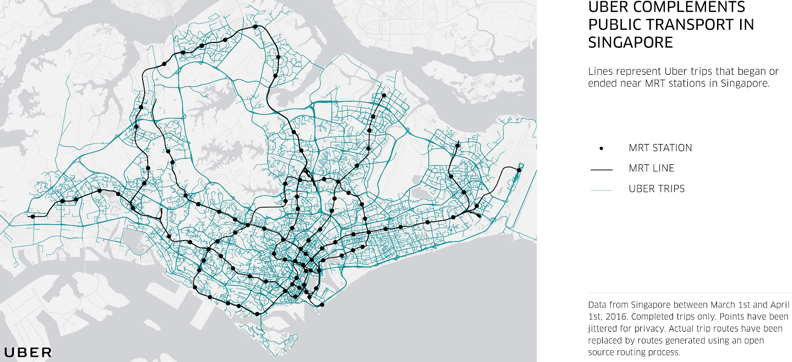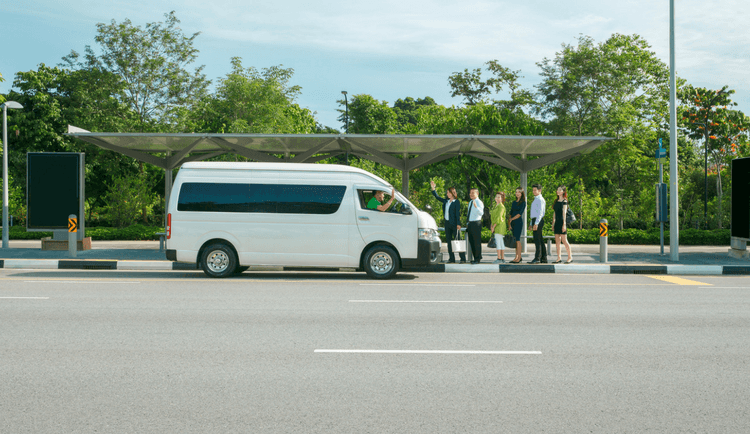
Photo credit: petunyia / 123RF.
Does fewer cars on Singapore’s roads bode well or ill for Uber and Grab? It’s a toss-up – on one hand, fewer people owning cars could mean more passengers for ride-hailing services; on the other, if owning and driving a car gets much more expensive, is it worth it for drivers to stay on the road?
It will likely be some time before this is put to the test – Singapore’s Land Transport Authority (LTA) just announced it will be curbing the number of new cars that make it onto the city-state’s roads next year and the changes will go into effect from February onwards.
Previously, the annual increment of new cars allowed on the road was 0.25 percent; it will now drop to zero.
According to LTA, there were 898,239 vehicles on Singapore’s roads at the end of 2016, with 601,218 of those being private cars.
Lean and green
The reasons why this is happening now range from the purely pragmatic to the aspirational.
In practical terms, the island nation simply doesn’t have enough physical space to spare. “Today, 12 percent of Singapore’s total land area is taken up by roads. In view of land constraints and competing needs, there is limited scope for further expansion of the road network,” says LTA’s announcement.
Grab measures success based on using existing cars as efficiently as possible before adding more.
With a growing population and finite room to grow into, Singapore has been hacking together a number of methods to accommodate everything and everyone – a limited number of vehicles being one of them.
But Singapore also wants to be a “smart nation,” one driven by constant inflows of data, efficient processes, and quantifiable metrics. By limiting the number of cars on its roads, it can push for more efficient public transportation networks, more sustainable energy consumption, and reduced pollution.
LTA’s decision follows the country’s bid for less reliance on private vehicles, mostly by boosting its public transportation capabilities (subway breakdowns notwithstanding). For example, its newest Massive Rapid Transit (MRT) subway line – the Downtown Line – has recently been extended to increase coverage. The country is also looking to improve its fleet of buses with electric vehicles – and is even experimenting with self-driving ones.
Sharing is caring
In all of this, where do operators like Uber and Grab – and, to a lesser degree, licensed taxi providers – fit in?
Jochen Krauss, managing partner at consultancy Simon-Kucher & Partners, thinks ride-hailers are among the parties that can benefit. “Many more people will rethink if they want to own a car or not,” he tells Tech in Asia. The trend of switching from owning cars to using shared alternatives is seen elsewhere in the world as well, he adds.
Uber claims its philosophy in Singapore is in line with LTA’s when it comes to a “car-lite” society. “Together with great public transport, ride-sharing platforms like Uber can create a credible alternative to private car ownership by allowing people access to a safe, reliable, and affordable ride wherever they are in the city,” an Uber spokesperson told Tech in Asia.
According to the ride-hailer’s data, nearly 30 percent of Uber trips on the island begin or end near MRT stations. It’s something the company has talked about before – how its service can work in collaboration with public transport, driving people to specific spots where they can then jump on a train or bus for the rest of their journey.

Close to 30% of Singapore Uber rides begin or end near MRT stations. Image credit: Uber.
It’s a use case that’s supported by other types of vehicle sharing too – it only takes a brief walk around different MRT stations in Singapore to see throngs of shared bikes parked outside, as people ride from home to the station and then take the train. LTA created new bike parking zones outside several stations on the island for this exact purpose. Bike-sharing provider oBike also announced it would notify users of such zones through geofencing.
The sharing concept extends to carpooling – a pre-existing concept given new life through mobile apps. Singapore startup Ryde made this its core concept, while also adding cab booking features through a partnership with local taxi operator Comfort DelGro in May.
Uber and Grab offer their own carpooling options by allowing a driver to pick up multiple passengers. Grab also offers GrabHitch, a peer-to-peer carpooling option that’s closer to Ryde’s concept.
“Carpooling is a cheaper and greener point-to-point option. The cut in car growth actually means that people are going to share rides more often,” says Terence Zou, Ryde founder and CEO.
Grab is going a step further in that direction by having its own dedicated service for multi-passenger transport. GrabShuttle lets riders book shuttle buses that follow specific routes and groups passengers together depending on where they are headed. It’s like a bus service, but on demand. The service works in collaboration with Beeline, a transportation platform using real-time data created by Singapore’s Government Technology Agency.
Head of Grab Singapore Lim Kell Jay tells Tech in Asia the company will continue expanding the service for large groups of commuters.

GrabShuttle allows users to book a seat on shuttles following fixed routes. Photo credit: Grab.
Fewer cars doesn’t mean less business
LTA has said its decision is not expected to greatly affect the number of Certificates of Entitlement (COE), the finite licenses granted to Singapore vehicles to allow them on the road. The issuing of new COEs is dependent on how many vehicles are deregistered every year, as a new vehicle replaces the old one – another measure to control the number of cars on the road.
Fewer available cars could lead to increased prices for those COEs, which could put the squeeze on drivers for Uber and Grab. “The one thing that’s clear if you limit the car population is that prices will go up – COEs might become more volatile,” says Krauss.
New ventures come up the moment you have a limited supply.
One danger there, he adds, is that drivers may not be able to continue bearing the cost of cars, or operators like Uber and Grab might push those increased costs onto their customers. He clarifies, though, that while he expects price increases, he doesn’t think they will be so drastic as to make ride-hailing drivers give up.
Uber and Grab did not comment on the topic. Uber also did not comment on whether it expects LTA’s decision to result in fewer available cars for the service. Grab says it measures success based on using existing cars as efficiently as possible before adding more.
Lim says that more than 90 percent of the company’s vehicles are leased to commercial drivers who spend at least five hours a day driving for Grab.
“Grab will continue to maintain strong utilization rates while growing our fleet meaningfully within LTA’s quota,” he adds. “We believe the primary responsibility of ride-hailing companies is to convert as many personal cars into shared assets, so that more people may benefit from the increased convenience and accessibility of point-to-point transportation services, as opposed to operating a car rental business which leads to an oversupply of unutilized vehicles.”
The sharing economy, which includes everything from cars to bikes to umbrellas, has had its share of failures. But it has also given rise to some of the biggest companies out there at the moment. “New ventures come up the moment you have a limited supply,” Krauss says. “That includes cars and many other things that essentially allow sharing of limited goods in an economy.”
This post Singapore wants fewer cars on its roads. Here’s what it means for Grab and Uber appeared first on Tech in Asia.
from Tech in Asia https://www.techinasia.com/singapore-car-freeze-ride-hailers-uber-grab
via IFTTT
No comments:
Post a Comment